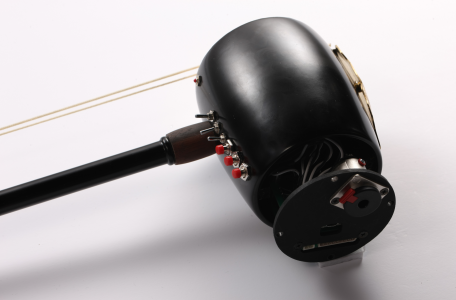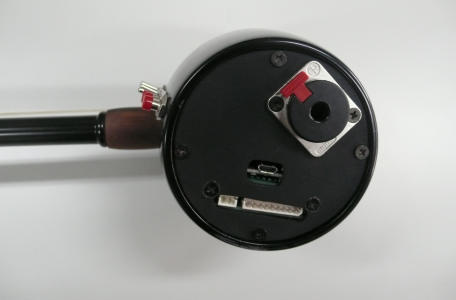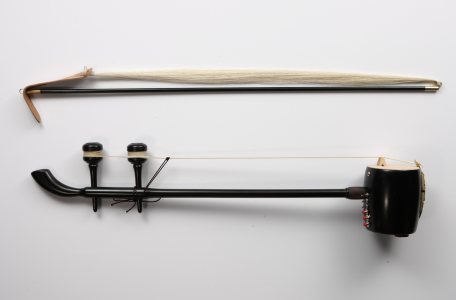The Haegum is a two-stringed fiddle-like traditional Korean string instrument. It is played vertically held on the left knee, with a bow scraped against two silk strings with the right hand. It produces a nasal tone and piercing sounds, as it has no finger board and musicians pull the strings to get to the desired pitch. Haegum is traditionally said to be “pal-um-gu-bi (八音具備)” and “bisa-bijuk (非絲非竹),” literally meaning “made with eight materials (metal, rock, thread, bamboo, gourd, soil, leather, and wood)” and “non-string, non-wind.” Though in structure and playing method, it looks like a string instrument, in orchestral contexts it is considered to be more like a wind instrument because of its ability to sustain tones. The design of the eHaegum had many challenges. First of all, the Haegum has a very small cavity to install electronics, so the design incorporated the Arduino micro and two small custom built shields to connect the sensors and buttons. A key design element was to encase the electronics in the instrument itself, (rather than have an electronic box off the instrument) so that the eHaegum was easier for a traditional player to just pick up and plug in a USB cable and a TRS cable (rather than some strange assortment of cables leading to a box next to the computer). An accelerometer was installed inside the body of the instrument, and a second accelerometer was installed on the leather strap of the bow. A force-sensing resistor (FSR) was installed to fit underneath the bridge to gather data on how the left hand squeezes the strings while manipulating pitch. A series of buttons and switches were installed into the shell of the instrument to make it easy for the musicians to change patches and settings.
EHAEGUM
Korean Digital Bowed Instrument


